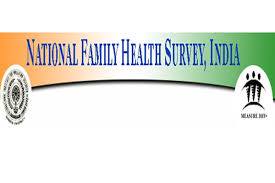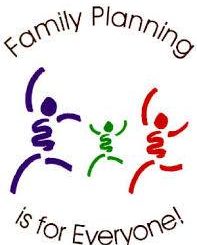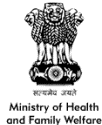
The initiatives taken by the Government to address the family planning (FP) needs of people include expansion of basket of choice to include new contraceptives, redesigning of contraceptive packaging, development of new family planning media campaign, enhanced compensation scheme for sterilization, emphasis on Postpartum Family Planning services, scheme for ensuring drop back services to sterilization clients, appointment of dedicated Reproductive-Maternal-Neonatal-Child and Adolescent Health (RMNCH+A) counsellors at high case load facilities, scheme for Accredited Social Health Activists to ensure spacing in births, celebration of World Population Day & fortnight to boost family planning efforts in the country, establishing quality assurance committees in all State and districts for ensuring quality FP services, increasing male participation and promotion of ‘Non Scalpel Vasectomy’’, ‘National Family Planning Indemnity Scheme’ etc.
As reported by the States and UTs and published in Rural Health Statistics 2014-15, as on 31st March 2015, there were 153655 Sub Centres, 25308 Primary Health Centres 5396 Community Health Centres, 1022 Sub District/ Sub Divisional Hospitals, 763 District Hospitals functioning in the Country to provide health care services including family planning in the public sector.
Key results published so far by the Ministry from National Family Health Survey 4 (NFHS 4) 2015-16 for 18 States/UTs reveal improvement of indicators for female health, literacy, financial means and age of marriage in comparison to NFHS-3 (2005-06) estimates. Statewise details are given below:
Comparative figures from NFHS-4 (2015-16) and NFHS-3(2005-06) for selected indicators
| State/UT | Total fertility rate (Children per women) | Institutional births (%) | All women aged 15-49 years who are anaemic (%) | Women having a bank or savings account that they themselves use (%) | Women who are literate (%) | Women age 20-24 Years married before age 18 years (%) | ||||||
| NFHS-4 | NFHS-3 | NFHS-4 | NFHS-3 | NFHS-4 | NFHS-3 | NFHS-4 | NFHS-3 | NFHS-4 | NFHS-3 | NFHS | NFHS-3 | |
| Assam | 2.2 | 2.4 | 70.6 | 22.4 | 46.0 | 69.3 | 45.4 | 11.7 | 71.8 | 63.0 | 32.6 | 38.0 |
| Andhra Pradesh # | 1.8 | – | 91.6 | – | 60.0 | – | 66.3 | – | 62.9 | – | 32.7 | – |
| Bihar | 3.4 | 4.0 | 63.8 | 19.9 | 60.3 | 67.4 | 26.4 | 8.2 | 49.6 | 37.0 | 39.1 | 60.3 |
| Goa | 1.7 | 1.8 | 96.9 | 92.3 | 31.3 | 38.0 | 82.8 | 42.4 | 89.0 | 83.6 | 9.8 | 11.7 |
| Haryana | 2.1 | 2.7 | 80.5 | 35.7 | 62.7 | 56.1 | 45.6 | 12.4 | 75.4 | 60.4 | 18.5 | 39.8 |
| Karnataka | 1.8 | 2.1 | 94.3 | 64.7 | 44.8 | 51.2 | 59.4 | 22.1 | 71.7 | 59.7 | 23.2 | 41.2 |
| Madhya Pradesh | 2.3 | 3.1 | 80.8 | 26.2 | 52.5 | 55.9 | 37.3 | 8.9 | 59.4 | 44.4 | 30.0 | 53.0 |
| Maharashtra | 1.9 | 2.1 | 90.3 | 64.6 | 48.0 | 48.4 | 45.3 | 20.3 | 80.3 | 70.3 | 25.1 | 39.0 |
| Manipur | 2.6 | 2.8 | 69.1 | 45.9 | 26.4 | 35.7 | 34.8 | 8.0 | 85.0 | 72.6 | 13.1 | 12.7 |
| Meghalaya | 3.0 | 3.8 | 51.4 | 29.0 | 56.2 | 46.2 | 54.4 | 16.9 | 82.8 | 69.5 | 16.5 | 24.5 |
| Sikkim | 1.2 | 2.0 | 94.7 | 47.2 | 34.9 | 59.5 | 63.5 | 20.9 | 86.6 | 72.3 | 14.5 | 30.1 |
| Tamil Nadu | 1.7 | 1.8 | 99.0 | 87.8 | 55.1 | 53.2 | 77.0 | 15.9 | 79.4 | 69.4 | 15.7 | 21.5 |
| Telangana | 1.8 | – | 91.5 | – | 56.7 | – | 59.7 | – | 65.2 | – | 25.7 | – |
| Tripura | 1.7 | 2.2 | 79.9 | 46.9 | 54.5 | 65.1 | 59.2 | 18.7 | 80.4 | 68.5 | 32.2 | 41.0 |
| Uttarakhand | 2.1 | 2.6 | 68.6 | 32.6 | 45.2 | 54.7 | 58.5 | 20.1 | 76.5 | 64.7 | 13.9 | 22.6 |
| West Bengal | 1.8 | 2.3 | 75.2 | 42.0 | 62.5 | 63.2 | 43.5 | 14.1 | 71.0 | 58.8 | 40.7 | 53.3 |
| Andaman & Nicobar Islands | 1.5 | – | 96.6 | – | 65.7 | – | 81.8 | – | 84.1 | – | 17.1 | – |
| Puducherry
|
1.7 | – | 99.9 | – | 52.4 | – | 68.2 | – | 85.0 | – | 10.7 | – |
Source: NFHS-4 (2015-16) State fact sheets;
– Not Available, Union Territories except Delhi were not covered in NFHS-3, Telangana- newly created State # new Andhra Pradesh State.
Health is a State Subject. Under National Health Mission support is provided to the States/UTs to strengthen their health care system based on the requirements posed by them under Programme Implementation Plans. National Health Mission (NHM), has two Sub-Missions, viz. the National Rural Health Mission (NRHM) and the National Urban Health Mission (NUHM). While NRHM was launched in April 2005, launch of NUHM was approved by the Cabinet on 1st May 2013. NHM envisages achievement of universal access to equitable, affordable & quality healthcare services that are accountable and responsive to people’s needs. The main programmatic components include Health System Strengthening in rural and urban areas, (RMNCH+A) interventions and control of Communicable and Non-Communicable Diseases.






Leave a Reply
You must be logged in to post a comment.